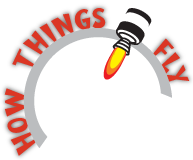Ask an Explainer
Q:
How can gliders fly without thrust?
A:
Technically gliders don't fly at all, they glide!
Like paper airplanes, their special shape allows them to generate lift and to stay in the air for moderate amounts of time, so long as they're given initial velocity through a strong throw. But they're not flying so much as just controlling their fall.
Read more about glider flight here.

Posted on March 18, 2016 at 9:41 pm
Categories:
